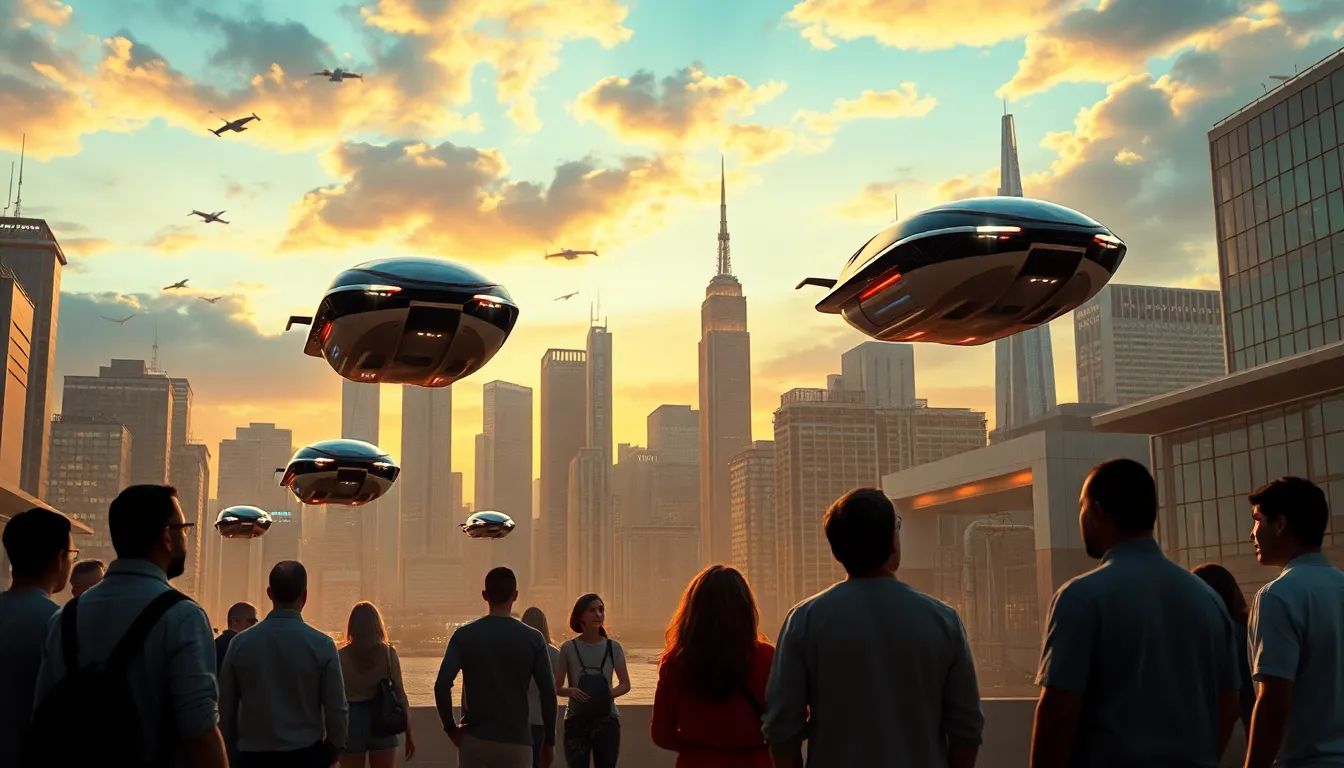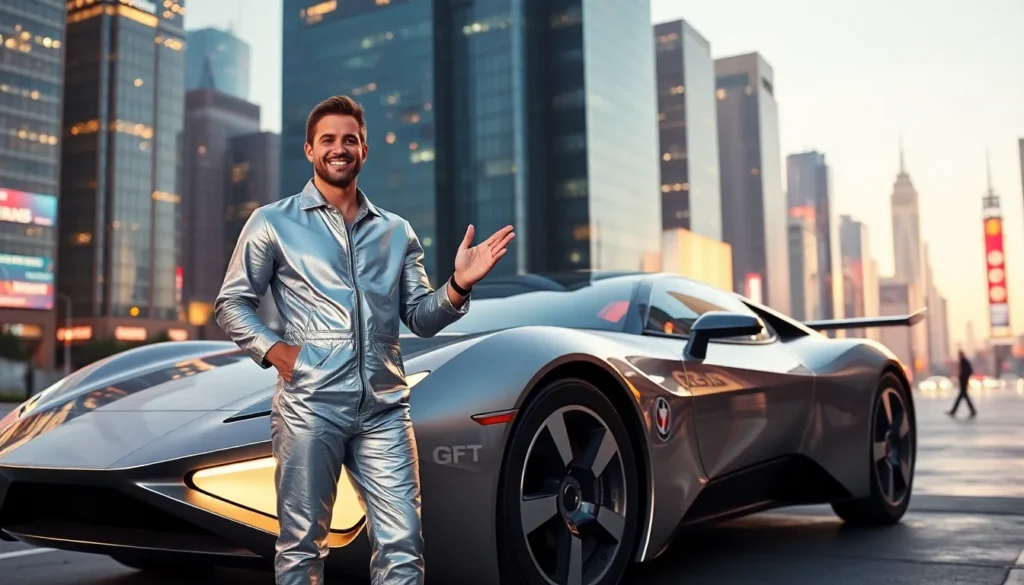Table of Contents
ToggleImagine a world where flying cars are as common as coffee shops and robots do all the chores. Sounds like a sci-fi movie, right? Yet, these were the predictions of the past, where futurists had more confidence in their crystal balls than in common sense. From the Jetsons’ utopia to the promise of moon colonies, the visions of yesteryear often missed the mark in spectacular ways.
As we take a stroll down memory lane, it’s both amusing and enlightening to explore how past predictions of the future shaped our expectations. With a mix of optimism and wild imagination, these forecasts reveal not just our aspirations but also our hilarious miscalculations. Buckle up for a journey through time where the future was bright, and the predictions were, well, a bit off the rails.
Overview of Past Predictions of the Future
Past predictions of the future often reveal a blend of optimism and naivety. Futurists envisioned remarkable advancements such as flying cars, robot assistants, and cities soaring above ground. In many instances, these ideas sparked excitement and wonder, shaping societal expectations for technological progress.
Societal influencers from the mid-20th century, like George Jetson of “The Jetsons,” epitomized this futurism. Iconic depictions captured an idealized version of life dominated by technology. In stark contrast, everyday experiences today highlight a gap between imagination and reality.
Several predictions stand out for their sheer audacity. For example, in 1967, a report from the American Institute of Aeronautics and Astronautics forecasted widespread use of personal flying vehicles by the year 2000. That vision showcased the era’s hope for conceptual innovations.
NASA’s Apollo program also exemplified the high expectations of its time. It inspired a belief that by now, humans would have established colonies on Mars. Reality, however, remains grounded in exploratory missions with no permanent settlements to date.
Despite the inaccuracies, these predictions pushed technological boundaries. They influenced research and investment in fields like robotics and aerospace. Today’s advancements often reference these earlier dreams, illustrating how past visions impact present innovations.
Cultural artifacts from past decades reflect society’s aspirations and fears surrounding technological evolution. Misguided yet inventive forecasts continue to entertain and inform conversations about what the future holds. Through humor and reflection, the exploration of past predictions offers deeper insights into human creativity and ambition.
Key Themes in Historical Predictions

Historical predictions reveal significant themes, including technological advancements and social changes. These predictions illustrate society’s hopes and misconceptions about the future.
Technological Advancements
Predictions often focused on groundbreaking technologies. Futurists envisioned flying cars, as seen in the 1960s, where experts claimed personal vehicles would dominate roads by the year 2000. Robotics captured imaginations, with expectations of household robots managing chores. Energy sources also drew attention, with forecasters hoping for abundant clean energy through fusion. Every ambitious forecast pushed the boundaries of available technology, inspiring innovations in transportation and automation. Predictions ultimately fueled research, driving advancements despite their inaccuracies.
Social Changes
Predictions frequently reflected societal aspirations for a better future. Futurists anticipated changes to work life, such as a shift towards remote work enabled by advanced communication technologies. Expectations included reduced work hours as automation increased efficiency and productivity. Social equality emerged as a significant theme, with many envisioning a world free from poverty and discrimination due to technological progress. Predictions often missed crucial elements of societal dynamics, revealing the gap between aspirations and reality. Each visionary forecast underscored the complexities of human relationships alongside technological evolution.
Notable Figures in Predictions
Many influential figures shaped the landscape of future predictions. Their visions continue to spark discussions about technological potential and human creativity.
H.G. Wells
H.G. Wells emerged as a pivotal voice in science fiction during the early 20th century. He predicted advances in aviation, envisioning personal aircraft and tools for time travel. Notable works like “The Time Machine” and “The War of the Worlds” illustrated his ability to blend scientific concepts with imaginative storytelling. His foresight about the impact of technology on society remains relevant. Predictions of global conflict and the rise of machines resonated with readers, prompting critical reflections on progress and human nature. Wells’s thoughts influenced future generations of writers and innovators alike.
Jules Verne
Jules Verne stands out as a forerunner of modern science fiction. His exploration of technological possibilities in novels like “Twenty Thousand Leagues Under the Sea” showcased futuristic inventions such as submarines and space travel. Verne’s realistic portrayal of technology sparked interest in exploration and maritime advancements. His forecasts often emphasized overcoming human limitations through innovation. Ultimately, his pioneering visions inspired engineers and scientists, driving real-world developments in transportation and communication. Verne’s legacy lies in how his ideas continue to challenge perceptions of what the future can hold.
Accuracy of Past Predictions
The accuracy of past predictions reveals both remarkable foresight and significant errors. Futurists correctly anticipated certain developments while misjudging others.
Successful Predictions
Some forecasts proved accurate, notably those predicting advancements in technology and communication. For instance, the emergence of remote work options aligns with earlier predictions about increased connectivity. Predictions of personal computers and the internet lay the groundwork for today’s digital age. Additionally, advances in medicine, such as gene editing and telemedicine, reflect the visionary insights of past thinkers. These successful predictions highlight how early insights paved the way for significant innovations that transformed society.
Failed Predictions
Conversely, many predictions fell short of reality, illustrating the unpredictability of technological progress. The expectation of flying cars by the year 2000 stands as a prominent example of overly optimistic forecasting. Futurists also envisioned robots managing household chores, a vision yet to fully materialize. Similarly, predictions of Mars colonies by the early 21st century highlight the gap between ambition and achievement. These failures underscore the challenges of accurately predicting the future and remind society of the complex interplay between aspiration and reality.
Impact of Predictions on Society
Predictions about the future significantly shaped societal expectations and aspirations. These forecasts often inspired technological advancements and mobilized research across various fields. Forecasts of flying cars and household robots ignited imaginations and pushed innovators to explore uncharted territories.
Influential figures like George Jetson from “The Jetsons” served as cultural icons, representing the ideal future filled with convenience and leisure. Society embraced these visions, hoping for a world where technology would alleviate burdens and promote equality. Notable predictions from the 1960s, including personal flying vehicles and Mars colonies, fueled excitement but often resulted in disappointment.
Technological optimism drove sectors such as aerospace and robotics to innovate. Ambitious visions of clean energy through fusion motivated research, even if those goals remain unfulfilled. Evolving societal norms concerning remote work and reduced labor hours reflected unanticipated shifts, stemming from advancements in automation and technology.
H.G. Wells and Jules Verne also contributed to the discourse on future possibilities. Their works examined the societal impacts of technological innovations, challenging readers to reflect on progress and potential consequences. The accuracy of predictions varied, revealing a mix of prescient insights and gross miscalculations.
Realities such as the proliferation of personal computers and the internet validated some forecasts while others, like the dream of flying cars, did not materialize. These contrasting outcomes highlight the complexity of forecasting, teaching society about the balance between aspiration and reality. Each prediction, whether accurate or not, left an indelible mark on cultural consciousness, driving dreams and discussions about what the future holds.
Past predictions of the future reveal a fascinating interplay between ambition and reality. While many forecasts missed the mark, they ignited imaginations and inspired technological advancements that shape today’s world. The blend of optimism and naivety in these predictions serves as a reminder of humanity’s relentless pursuit of progress.
Figures like H.G. Wells and Jules Verne not only entertained but also challenged society to envision possibilities beyond current limitations. Their legacies continue to influence innovators and thinkers. Ultimately, these historical predictions underscore the importance of dreaming big while acknowledging the complexities of turning aspirations into reality.








